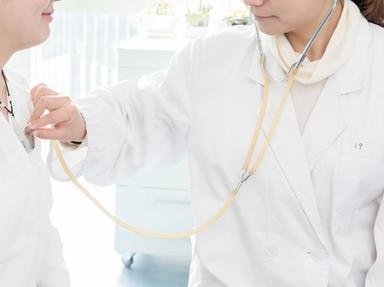Quiz Answer Key and Fun Facts
1. You have a new admission to your floor, and you need to find out as much as possible about your new patient. He is not in need of immediate medical attention, but you need to know a lot about him. Which of these sets of information is MOST important to find out?
2. While you're conducting your initial assessment, you need to know the patient's vital signs. Which of these are NOT part of the set of vital signs you need to obtain?
3. Your initial assessment is finished, and the patient is as happy as can be expected. However, you still need to make sure he is doing well every so often. How often should you check in and ask him if everything is okay?
4. It's time for medication. You have many of them to give to your patient, so it's tough to keep track of all of them. Once you have everything straightened out and go into the patient's room, you make one last check before giving each medication. You tell your patient that he's getting blood pressure medication, but he says he has never taken it before. What should you do?
5. During one of your check-ins with the patient, he says he has back pain. He rates it as a 6 on a scale of 0 to 10, and would like pain medication. What is the first thing you should do?
6. It's mealtime. You noted on your initial assessment that the patient has dysphagia (difficulty swallowing). Which of the following meals should you give your patient?
7. Your patient's doctor has given you a report, saying that he has an infection. The doctor orders an antibiotic, which comes in a pouch with normal saline fluid. After you've mixed the powdered medication with the saline, you hang the whole pouch on a pole, and connect a long, narrow tube to it, which goes straight into the back of the patient's hand. What is this procedure called?
8. If your patient is on bedrest, it's important to turn and reposition him every couple of hours. All of the following can be accomplished by turning and repositioning, except:
9. Uh-oh! Your patient hits the call bell. You go into his room and he says he is having trouble breathing. You help him to sit upright, tell him to take several deep breaths, and breathe along with him. Have you done the right thing?
10. You've reached the end of the day, and you did great! Your friend asks about the patient you cared for today. You are allowed to tell your friend all of the following except:
Source: Author
Jordanar18
This quiz was reviewed by FunTrivia editor
rossian before going online.
Any errors found in FunTrivia content are routinely corrected through our feedback system.


